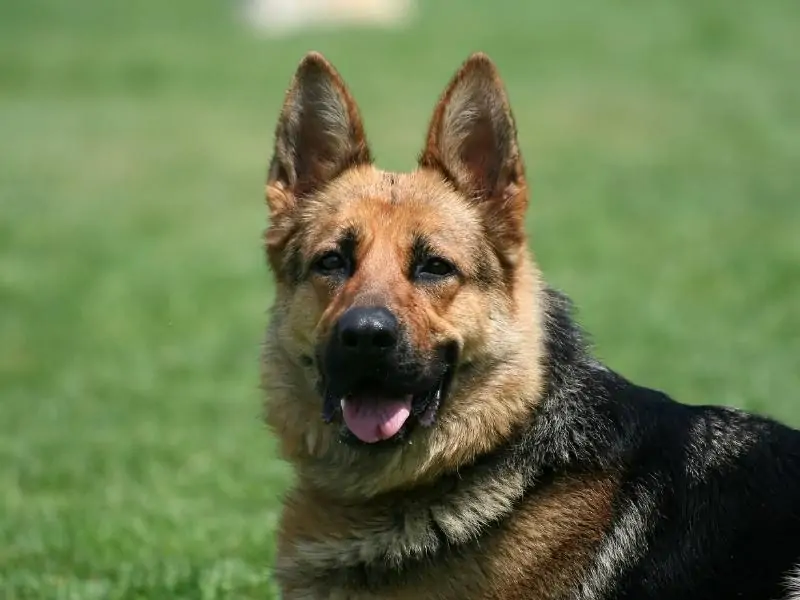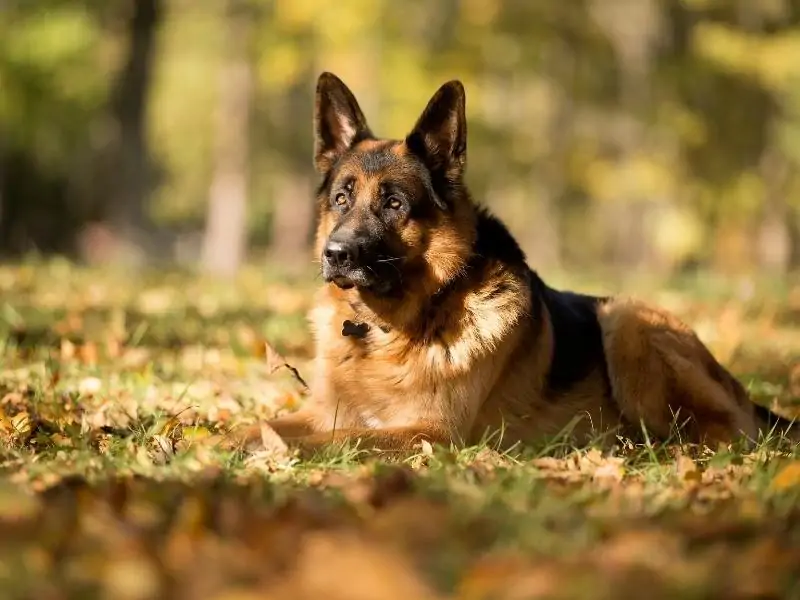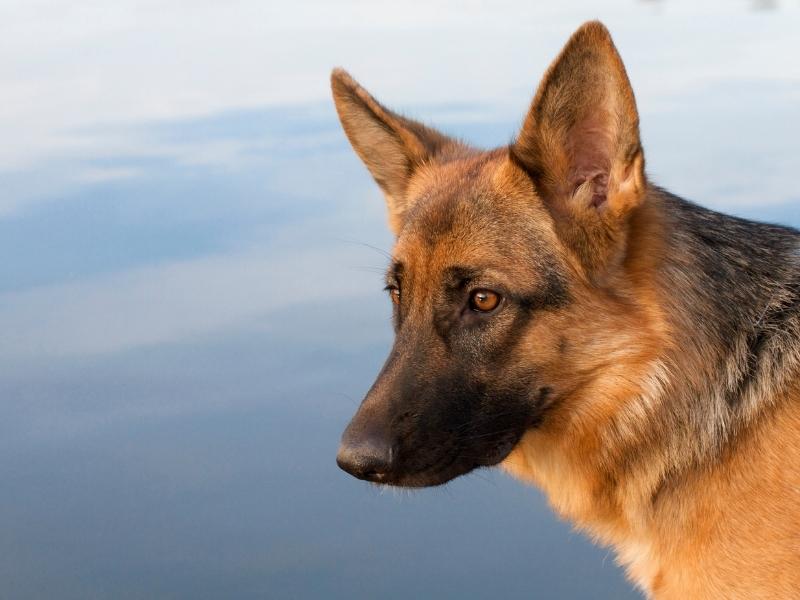Czech German Shepherds aren’t a brand new breed, but just one of several different types of German Shepherds. While the Czech GSDs were originally bred to be border dogs, they are nowadays mostly kept as pets and companions.
But, are Czech German Shepherds good family dogs? Czech German Shepherd dogs make wonderful family companions. They are very affectionate with their families including children who know how to play and interact with a dog. Czech GSDs crave attention and companionship so much so that they can easily develop separation anxiety if left often alone.
Whether you are looking to get a Czech German Shepherd puppy or are just interested in learning more about these dogs, you are in the right place! Keep on reading to find everything you need to know about these amazing dogs!
What Is a Czech German Shepherd?
The Czech German Shepherd is one of several different lines of German Shepherds. It’s worth noting that Czech Shepherds have exactly the same standard as traditional German Shepherds and aren’t viewed as a different breed.
Brief History of the Czech German Shepherd
The Czech German Shepherd is a working dog developed in 1955 in Czechoslovakia under the Czech Alsatian breeding program. Unlike classic German Shepherds which were originally bred to serve as herding dogs and were later trained to do police work, the Czech Shepherds were bred for law enforcement.
The goal of the Czech Alsatian breeding program was to help Pohranicni Straze, the Czech army’s border control force (source). Given their history, many people assume that Czech Shepherds were bred for aggression, but that’s not the case.
These dogs were bred for stamina, ability to follow orders, and strong work ethic. In many ways, Czechoslovakian GSDs are similar to another working line, DDR German Shepherds that originated in East Germany. However, they aren’t the same, and Czech Alsatians shouldn’t be confused with East German DDR dogs.
Characteristics of the Czech German Shepherd

Like any other specimen of the German Shepherd breed, the Czech Shepherd has a wolf-like appearance. However, upon closer inspection, you’ll notice there are subtle differences that distinguish American Show Line, West German Working Lines, East German Shepherd DDR Working Lines, and Czech GSDs from one another.
Physical Appearance
Czech Shepherd dogs have strong jaws but also straighter backs, more muscular build, thicker heads, larger chests, and heavier paws than American Show Line German Shepherds. Like all other working lines GSDs, Czech Alsatians were bred to be more functional than pretty and they should exude power and agility.
Size
All different lines of German Shepherd Dog breed should be large in size. So you can expect your Czech German Shepherd to be a large-sized dog.
Height and Weight
Male Czech Alsatian dogs are typically larger than females and weigh from 66 to 88 pounds and are between 24 and 26 inches tall at the shoulders. Females, on the other hand, usually weigh from 50 to 70 pounds and are from 22 to 24 inches tall at the withers.
Color
Unlike the traditional German Shepherd Dog that comes in many different colors, the Czech Alsatian most often comes in sable, black, or a mix of these two colors. The main reason why these dogs don’t come in more colors is that they were bred for their working abilities, not good looks!
Coat
Czech German Shepherds have a medium-length double coat with a coarse top layer and a soft and fluffy undercoat. These pooches are heavy shedders, so don’t get one if you suffer from asthma or allergies.
Temperament
Although originally bred to serve as border patrol dogs and catch trespassers, Czech Shepherds make fantastic family dogs. They like to spend time with their people, and will always look for ways to spend an extra minute in your company.
Like all other types of German Shepherd, the Czech line is extremely loyal and affectionate with their people and is also protective of children. Besides being a loving companion, this dog can also be a great guard dog that will make it its job to protect the entire family.
While all German Shepherds are very intelligent, the Czech Alsatian is believed to be the smartest of them all, which can make training a breeze. However, this also means that they can become bored and frustrated easily.
If you want to avoid dealing with a destructive dog, make sure to keep your pup’s mind occupied with interactive and puzzle toys.
Are There Any Health Issues with the Czech German Shepherd?
The Czech German Shepherd is a fairly healthy dog that doesn’t inherit a host of health issues. Since they don’t have the extremely sloped backs of the American Show Lines, Czech Alsatians are less likely to suffer from spinal and skeletal problems.
The most common health problems seen in these dogs are:
- Hip dysplasia
- Bloat
- Eye problems
- Ear infections
The Czech German Shepherd has an average life expectancy of 10 to 14 years.
Czech German Shepherd Care

Like any other breed of dog, the Czech Alsatian needs a dedicated owner who will understand its needs and care for its dog properly. If you decide to get the Czech GSD, here’s what you’ll need to do:
Grooming
These dogs have thick double coats, which means that they shed all year round and go through shedding season twice a year. To minimize the shedding and the amount of dog hair flying around your home you’ll need to brush your dog every day!
Luckily, Czech Shepherds don’t have to be bathed often and you can do it only when your dog becomes extremely dirty. Bathe your dog with a de-shedding shampoo to keep the shedding under control.
The rest is basic care and involves daily teeth brushing, nail trimming, and ear cleaning. Check your dog’s ears for dirt and waxy buildup once a week and clean as necessary.
Training
Obedient and eager to please German Shepherds are one of the easiest dogs to train! You shouldn’t have trouble training your Czech Shepherd even if you are a first-time dog owner.
These dogs can learn just about anything and will gladly do so, as long as you stick to positive reinforcement training. Use treats and praise to reward good behavior and simply ignore or correct bad behaviors to instill good manners into your pooch (source).
Since Czech Alsatians pick on commands quickly, they can become bored learning and repeating the same old commands. Keep your dog’s training routine interesting by including tricks and complex commands.
Socialization is an important aspect of training and should start as soon as you bring your German Shepherd puppy home. Try to expose your puppy to new people and situations to build up their confidence and reduce the risk of aggressive behavior in the future.
Exercise
Like all other types of German Shepherds, the Czech Alsatian is an athletic dog that needs a ton of exercise. These dogs need at least an hour of vigorous activities after the age of two.
These dogs excel at agility and other dog sports which can keep their mind and body occupied at the same time. Besides regular exercise, you should also play with your dog, as that will deepen your bond and keep your pooch entertained.
Proper Diet
An ideal diet for a Czech Shepherd should be formulated for a large dog breed with high energy. If your dog is going to work, choose a food specially formulated for working dogs as it will contain more protein and fat your dog needs to stay fueled throughout the day.
Avoid free-feeding your dog and stick to a regular feeding schedule of two meals for adult dogs and three meals for puppies. While Czech GSD isn’t prone to obesity you should refrain from overfeeding your dog.
Where to Get a Czech German Shepherd?
Like with any other dog, there are only two things you can do when looking for a Czech German Shepherd – adopt or shop!
Czech German Shepherd Breeders
If you decide to purchase a Czech German Shepherd puppy, you may want to check if there are any good breeders in your state before considering importing the puppy from Europe. When you locate a reputable breeder, schedule an appointment to meet the puppies and the parents and inspect the conditions they are kept in.
Czech German Shepherd Price
Czech German Shepherd puppies in the USA on average cost from $1000 to $1500 though some puppies can cost up to $4000. The exact price depends on many factors, including the breeder, lineage, quality, and health certificates.
Adoption
Although purebreds, some Czech Shepherds end up abandoned and in the care of shelters and rescue organizations across the country. Consider adoption if you think that the Czech Alsatian is the right dog for you.
Check out your local shelter to see if they have any Czech GSDs for adoption and also contact breed-specific German Shepherd rescue organizations to see if they have any dogs looking for forever homes.
Conclusion
The Czech German Shepherd is a working line of GSD that makes a fantastic pet and companion to active people and outdoorsy families with children. These dogs need lots of exercises and can’t stay cooped up in an apartment all day long.
If you are looking for an adventure buddy that can double as a guard dog, the Czech Alsatian is a perfect choice. However, this active working dog won’t be a good choice for urban dwellers with nine to five jobs.
Related Articles:


0 Comments